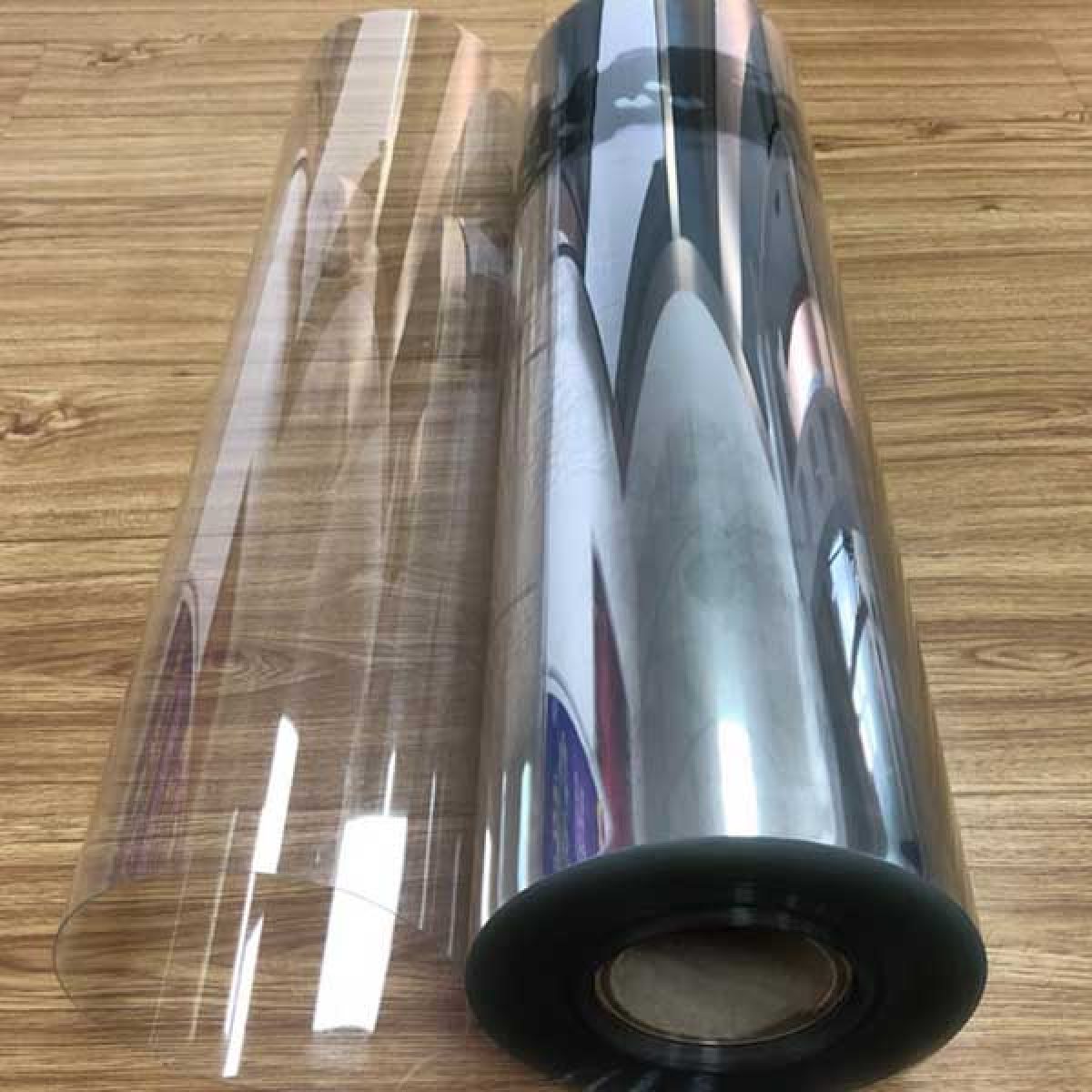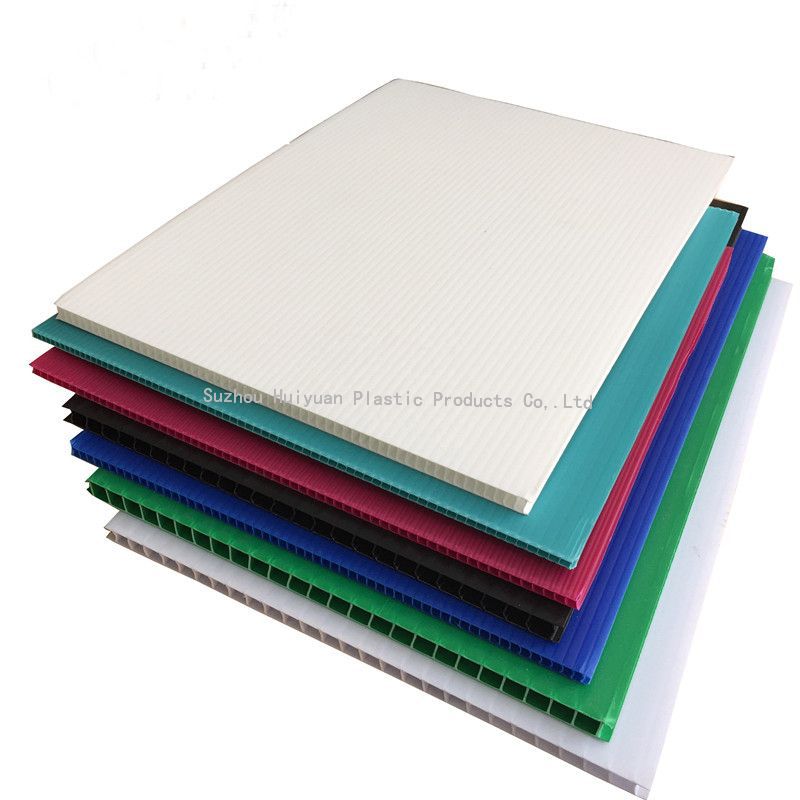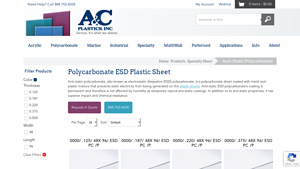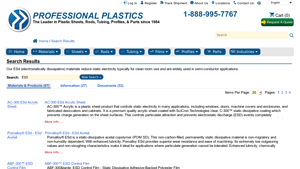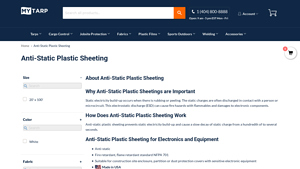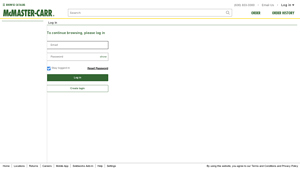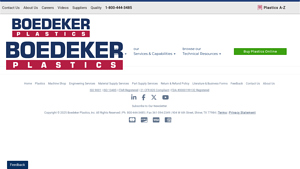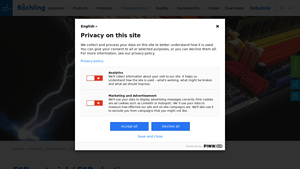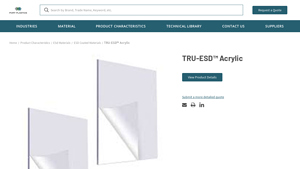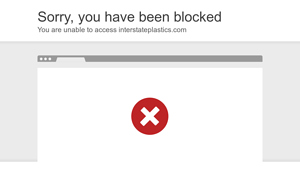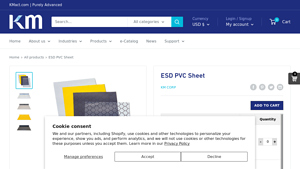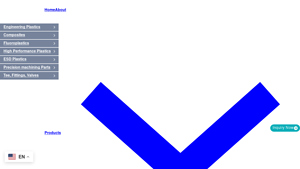Esd Plastic Sheet Guide: Type, Cost, Top List…
Introduction: Navigating the Global Market for esd plastic sheet
In the fast-evolving landscape of global manufacturing, sourcing the right ESD plastic sheets presents a significant challenge for B2B buyers. The need for effective static control is paramount, particularly in industries such as electronics and pharmaceuticals, where electrostatic discharges can lead to costly damages and safety hazards. This comprehensive guide aims to illuminate the intricacies of the ESD plastic sheet market, offering valuable insights into various types of materials, their applications, and critical factors to consider when selecting suppliers.
From understanding the differences between anti-static polycarbonate and acrylic sheets to evaluating the cost implications of sourcing ESD materials, this guide covers it all. It also delves into supplier vetting processes, ensuring buyers can make informed decisions that align with their operational requirements and budget constraints. Special attention is given to the unique needs of international buyers from regions such as Africa, South America, the Middle East, and Europe, including countries like Nigeria and Brazil.
By leveraging the knowledge provided in this guide, B2B buyers will be empowered to navigate the complexities of the ESD plastic sheet market confidently. With a focus on practical solutions and actionable insights, this resource equips businesses with the tools necessary to enhance their purchasing strategies, safeguard sensitive equipment, and ultimately drive operational excellence.
Understanding esd plastic sheet Types and Variations
| Type Name | Key Distinguishing Features | Primary B2B Applications | Brief Pros & Cons for Buyers |
|---|---|---|---|
| Anti-Static Polycarbonate | Permanent anti-static coating, high impact and chemical resistance | Access panels, static control shields, glove boxes | Pros: Durable, long-lasting; Cons: Higher initial cost compared to standard plastics. |
| ESD Polypropylene | Electrically conductive, lightweight, resistant to chemicals | Electronics packaging, cleanroom environments | Pros: Cost-effective, versatile; Cons: Lower impact resistance than polycarbonate. |
| ESD PVC | Flexible, flame retardant, and available in various thicknesses | Dust covers, construction site enclosures | Pros: Easy to handle and install; Cons: Less durable under heavy stress. |
| ESD Acetal Copolymer | Excellent sliding properties, high dimensional stability | Precision parts in electronics, automotive applications | Pros: High performance in mechanical applications; Cons: More expensive than standard PVC. |
| ESD Polyethylene (PE) | Good chemical resistance, lightweight, and cost-effective | Packaging for sensitive electronics, storage solutions | Pros: Affordable, widely available; Cons: Limited structural integrity under heavy loads. |
What Are the Characteristics and Suitability of Anti-Static Polycarbonate Sheets?
Anti-static polycarbonate sheets are distinguished by their permanent anti-static coating, which is highly resistant to humidity and wear. These sheets excel in environments where static electricity can cause damage, making them ideal for manufacturing applications such as access panels and static control shields. When purchasing, consider the sheet’s thickness and size, as these factors can significantly impact performance and compatibility with existing systems.
Why Choose ESD Polypropylene for Your Business Needs?
ESD polypropylene is a lightweight and cost-effective option that offers good chemical resistance and electrical conductivity. This type is particularly suited for electronics packaging and cleanroom environments, where static control is critical. Buyers should evaluate the specific requirements of their applications, including the need for flexibility versus rigidity, to ensure optimal performance.
What Makes ESD PVC a Practical Choice for Construction?
ESD PVC sheets are known for their flexibility and flame retardant properties, making them suitable for applications like dust covers and construction site enclosures. Their ease of handling and installation can be advantageous in dynamic work environments. However, businesses should weigh the cost against the potential need for more durable materials in high-stress applications.
How Does ESD Acetal Copolymer Stand Out in Precision Applications?
ESD acetal copolymer offers excellent sliding properties and high dimensional stability, making it ideal for precision components in electronics and automotive sectors. When considering this material, buyers should assess the specific mechanical requirements of their applications, as well as the balance between performance and cost.
What Are the Advantages of Using ESD Polyethylene in Packaging?
ESD polyethylene is a lightweight and cost-effective solution that provides good chemical resistance, making it an excellent choice for packaging sensitive electronics. While it is widely available and affordable, buyers should consider its limitations in terms of structural integrity, especially in applications that involve heavy loads or high stress.
Key Industrial Applications of esd plastic sheet
| Industry/Sector | Specific Application of esd plastic sheet | Value/Benefit for the Business | Key Sourcing Considerations for this Application |
|---|---|---|---|
| Electronics Manufacturing | Use in protective enclosures and packaging for sensitive components | Prevents electrostatic discharge that can damage components | Material certification for ESD compliance; thickness and durability specifications |
| Pharmaceutical Industry | Packaging for sensitive drugs and medical devices | Protects against contamination and electrostatic damage | Compliance with regulatory standards; chemical resistance properties |
| Automotive Industry | Interior components and dashboards | Reduces static build-up that can affect electronic systems | Need for fire retardancy and high-impact resistance; custom shapes and sizes |
| Construction and Building | Temporary enclosures and dust barriers for sensitive equipment | Protects against dust and static interference | Flame retardancy; weather resistance; ease of installation |
| Aerospace and Defense | Components in aircraft interiors and sensitive equipment | Ensures safety and reliability in high-stakes environments | Compliance with aerospace standards; lightweight and durable materials |
How is ESD Plastic Sheet Used in Electronics Manufacturing?
In the electronics manufacturing sector, ESD plastic sheets are essential for creating protective enclosures and packaging for sensitive components. These sheets prevent electrostatic discharge, which can lead to component failure or damage. Buyers should ensure that the materials sourced are certified for ESD compliance and meet specific thickness and durability requirements, especially when operating in regions like Africa and South America, where supply chain reliability may vary.
What Role Does ESD Plastic Sheet Play in the Pharmaceutical Industry?
In the pharmaceutical industry, ESD plastic sheets are used for packaging sensitive drugs and medical devices. Their anti-static properties help protect products from contamination and electrostatic damage, which is crucial for maintaining product integrity. Buyers in this sector must consider compliance with stringent regulatory standards and the chemical resistance properties of the materials, particularly in regions with diverse regulatory environments like Europe and the Middle East.
How is ESD Plastic Sheet Beneficial in the Automotive Industry?
The automotive industry utilizes ESD plastic sheets in the manufacturing of interior components and dashboards. These sheets help reduce static build-up, which can interfere with electronic systems, enhancing the reliability of vehicles. Sourcing considerations include the need for fire retardant properties and high-impact resistance, ensuring that the materials can withstand rigorous use and meet safety standards, particularly in emerging markets like Nigeria and Brazil.
In What Ways is ESD Plastic Sheet Used in Construction?
In construction, ESD plastic sheets serve as temporary enclosures and dust barriers for sensitive equipment. They protect machinery from dust and static interference during construction activities, thereby reducing the risk of equipment failure. Buyers should prioritize flame retardancy, weather resistance, and ease of installation when sourcing these materials, especially in challenging climates or regions with varying environmental conditions.
Why is ESD Plastic Sheet Important in Aerospace and Defense?
In the aerospace and defense industries, ESD plastic sheets are utilized for components in aircraft interiors and sensitive equipment. Their ability to prevent electrostatic discharge is vital for ensuring safety and reliability in high-stakes environments. Buyers must ensure that the materials comply with aerospace standards and possess lightweight yet durable characteristics, which are particularly critical when sourcing for defense applications in regions with stringent security requirements.
3 Common User Pain Points for ‘esd plastic sheet’ & Their Solutions
Scenario 1: Ensuring Product Safety in Electronics Manufacturing
The Problem: In industries like electronics manufacturing, the risk of electrostatic discharge (ESD) can be a significant concern. B2B buyers often face the challenge of ensuring the safety and reliability of sensitive electronic components. A single spark can lead to catastrophic failures, resulting in costly downtime and damaged equipment. Moreover, as companies expand into new markets in regions like Africa and South America, sourcing reliable ESD protection becomes even more critical. Buyers may struggle to find ESD plastic sheets that meet industry standards and provide the necessary protection for their high-value products.
The Solution: To effectively mitigate ESD risks, buyers should prioritize sourcing ESD plastic sheets that are not only compliant with international safety standards but also specifically designed for their applications. This involves conducting thorough research on suppliers, checking for certifications that validate the material’s ESD properties, and understanding the sheet’s specifications, such as surface resistance and thickness. Buyers can enhance their procurement process by engaging with manufacturers who provide detailed product data sheets and offer samples for testing. Establishing a partnership with a reliable supplier who understands the local market and industry requirements can also streamline sourcing and ensure consistent product quality.
Scenario 2: Overcoming Environmental Challenges with ESD Plastic Sheets
The Problem: Many buyers in regions such as the Middle East and Africa face environmental challenges that can affect the performance of ESD plastic sheets. Factors such as extreme temperatures, humidity, and dust can compromise the integrity of the materials, leading to increased static charge and potential safety hazards. Buyers may find themselves dealing with the ramifications of using subpar materials that do not hold up under local conditions, which can result in frequent replacements and additional costs.
The Solution: To address these environmental challenges, B2B buyers should look for ESD plastic sheets specifically designed for harsh conditions. This includes selecting materials with enhanced chemical resistance and those that maintain their ESD properties regardless of humidity fluctuations. Buyers should also consider investing in ESD sheets that have been treated or coated to withstand extreme temperatures. Engaging with manufacturers that specialize in region-specific products can provide insights into which materials are best suited for local climates. Additionally, implementing a rigorous testing protocol to evaluate the materials in real-world conditions can help ensure that the chosen ESD sheets perform reliably over time.
Scenario 3: Navigating Cost-Effectiveness While Maintaining Quality
The Problem: For many businesses, especially startups or those entering emerging markets, budget constraints are a significant factor when sourcing ESD plastic sheets. Buyers often face the dilemma of choosing between cost-effective solutions and ensuring the quality needed to protect sensitive equipment. Compromising on quality can lead to higher long-term costs due to increased failure rates and reduced product lifespan, creating a frustrating cycle of budget overruns and operational challenges.
The Solution: To strike a balance between cost and quality, buyers should conduct a comprehensive cost-benefit analysis that includes the total cost of ownership (TCO) of ESD plastic sheets. This analysis should encompass initial purchase prices, expected lifespan, potential failure rates, and the costs associated with equipment downtime. Buyers can also explore bulk purchasing options or long-term contracts with suppliers to negotiate better rates while ensuring consistent quality. Additionally, collaborating with suppliers who offer warranties or guarantees can provide extra security against defects or performance issues. Leveraging technology, such as online marketplaces that specialize in industrial materials, can also allow buyers to compare prices and specifications easily, ensuring they make informed decisions that align with their budget without sacrificing quality.
Strategic Material Selection Guide for esd plastic sheet
What Are the Key Materials for ESD Plastic Sheets?
When selecting ESD plastic sheets for industrial applications, it is essential to consider the material properties, their advantages and disadvantages, and their suitability for specific environments. Below, we analyze four common materials used for ESD plastic sheets, focusing on their performance characteristics and implications for international B2B buyers.
How Does Polycarbonate Perform as an ESD Plastic Sheet?
Polycarbonate is a popular choice for ESD applications due to its high impact resistance and durability. It features a permanent anti-static coating that remains effective regardless of humidity levels, making it suitable for environments where moisture is a concern. Polycarbonate sheets can withstand temperatures ranging from -40°C to 120°C and offer excellent chemical resistance.
Pros: The material is lightweight, easy to fabricate, and provides superior clarity, making it ideal for applications like protective shields and access panels.
Cons: However, polycarbonate can be more expensive than other options, and its manufacturing process may involve more complexity, which could lead to longer lead times.
What Are the Benefits of Using Acrylic for ESD Applications?
Acrylic sheets, known for their optical clarity and lightweight nature, are another viable option for ESD applications. They can be treated with anti-static coatings to reduce static charge accumulation, although these coatings may not be as durable as those found on polycarbonate.
Pros: Acrylic is less expensive than polycarbonate and offers good weather resistance, making it suitable for outdoor applications.
Cons: The material is less impact-resistant than polycarbonate, which can be a concern in high-traffic areas. Additionally, its anti-static properties may degrade over time, necessitating more frequent replacements.
How Do Conductive Plastics Enhance ESD Protection?
Conductive plastics, such as those made from polyethylene (PE) or polypropylene (PP), are designed to dissipate electrostatic charges effectively. These materials are often used in environments where static discharge can cause significant damage, such as electronics manufacturing.
Pros: They offer excellent chemical resistance and can withstand a wide range of temperatures, making them suitable for various industrial applications.
Cons: The main drawback is their limited optical clarity, which may not be suitable for applications requiring visibility. Furthermore, the initial cost can be higher due to specialized manufacturing processes.
What Should International Buyers Consider When Selecting ESD Plastic Sheets?
When sourcing ESD plastic sheets, international buyers, particularly from regions like Africa, South America, the Middle East, and Europe, should be aware of compliance with local standards such as ASTM, DIN, or JIS. Additionally, factors like shipping costs, lead times, and local availability of materials can significantly impact procurement decisions.
Pros: Understanding local regulations can help mitigate risks related to product liability and ensure compliance with safety standards.
Cons: The complexity of international logistics may lead to increased costs and longer delivery times, which can affect project timelines.
Summary Table of ESD Plastic Sheet Materials
| Material | Typical Use Case for esd plastic sheet | Key Advantage | Key Disadvantage/Limitation | Relative Cost (Low/Med/High) |
|---|---|---|---|---|
| Polycarbonate | Protective shields, access panels | High impact resistance and durability | Higher cost and manufacturing complexity | High |
| Acrylic | Outdoor displays, light covers | Cost-effective and good weather resistance | Less impact resistance and potential coating degradation | Medium |
| Conductive PE/PP | Electronics manufacturing, static-sensitive environments | Excellent charge dissipation and chemical resistance | Limited optical clarity and potentially higher initial costs | Medium |
| Anti-Static PVC | Construction site enclosures, dust protection | Affordable and versatile for various applications | May require frequent replacements due to coating wear | Low |
This guide provides a comprehensive overview of the key materials for ESD plastic sheets, helping international B2B buyers make informed decisions based on their specific needs and local requirements.
In-depth Look: Manufacturing Processes and Quality Assurance for esd plastic sheet
What Are the Key Manufacturing Processes for ESD Plastic Sheets?
The production of electrostatic dissipative (ESD) plastic sheets involves several critical stages, ensuring that the final product meets the stringent requirements of various industries, particularly electronics and automotive. Understanding these processes can help B2B buyers evaluate potential suppliers effectively.
How Are Raw Materials Prepared for ESD Plastic Sheets?
The manufacturing process begins with the careful selection and preparation of raw materials. Typically, ESD plastic sheets are made from high-quality polycarbonate or acrylic, which are chosen for their inherent strength and durability.
-
Material Selection: Suppliers source materials that include additives for anti-static properties. These additives can be either blended into the base resin or applied as a surface treatment.
-
Quality Inspection: Before production, materials undergo an Incoming Quality Control (IQC) process. This includes verifying the chemical composition and mechanical properties to ensure they meet specified standards.
What Techniques Are Used in the Forming Stage?
Once the materials are prepared, the next step involves forming the ESD plastic sheets through various techniques, primarily extrusion and injection molding.
-
Extrusion: In this method, raw plastic pellets are heated and forced through a die to create sheets of desired thickness. This technique is efficient for producing large volumes of sheets with uniform thickness.
-
Injection Molding: For complex shapes or specific designs, injection molding is employed. In this process, molten plastic is injected into a mold, allowing for high precision and detail.
-
Thermoforming: Some manufacturers also utilize thermoforming, where pre-cut sheets are heated and then shaped using molds. This method is useful for creating specialized products that require intricate designs.
How Is Assembly and Finishing Conducted?
The assembly and finishing stages play a crucial role in ensuring the final product meets quality expectations.
-
Cutting and Trimming: After forming, the sheets are cut to size. This step may involve automated cutting machines that ensure accuracy and minimize waste.
-
Surface Treatment: To enhance the anti-static properties, the sheets may undergo additional surface treatments. This includes applying coatings that provide permanent anti-static characteristics, which are more reliable than temporary solutions.
-
Quality Checks: Before packaging, the sheets are subjected to Final Quality Control (FQC) checks to ensure they meet dimensional specifications and surface quality standards.
What Are the Quality Assurance Standards for ESD Plastic Sheets?
Quality assurance is vital in the manufacturing of ESD plastic sheets, as these products must comply with various international and industry-specific standards.
Which International Standards Should B2B Buyers Be Aware Of?
-
ISO 9001: This standard outlines the requirements for a quality management system (QMS). Suppliers adhering to ISO 9001 demonstrate their commitment to consistent quality and customer satisfaction.
-
CE Marking: For products sold in Europe, CE marking indicates compliance with European safety standards. It is essential for ESD plastic sheets used in environments where safety is critical.
-
API Standards: In industries such as oil and gas, adherence to API standards ensures that materials can withstand harsh conditions without compromising safety.
How Are Quality Checks Implemented in the Manufacturing Process?
Quality control is integrated throughout the manufacturing process through several checkpoints:
-
Incoming Quality Control (IQC): This step involves inspecting raw materials for compliance with specifications before production begins. This may include testing for material properties such as tensile strength and electrical conductivity.
-
In-Process Quality Control (IPQC): During the manufacturing process, random samples are taken to monitor for defects. This includes visual inspections and measurements to ensure consistency in thickness and dimensions.
-
Final Quality Control (FQC): After production, each batch of ESD plastic sheets undergoes a final inspection. This includes testing for anti-static properties, surface defects, and dimensional accuracy.
What Testing Methods Are Commonly Used for ESD Plastic Sheets?
To ensure the reliability and safety of ESD plastic sheets, manufacturers employ various testing methods:
-
Surface Resistivity Testing: This method assesses the electrical resistance of the sheet’s surface, ensuring it meets the necessary ESD standards.
-
Impact Resistance Testing: Evaluating the sheet’s ability to withstand impacts is crucial, especially for applications in high-risk environments.
-
Chemical Resistance Testing: ESD plastic sheets must often resist various chemicals, and testing ensures they maintain integrity in such conditions.
How Can B2B Buyers Verify Supplier Quality Assurance?
B2B buyers looking to procure ESD plastic sheets should have a robust strategy for verifying supplier quality assurance:
-
Supplier Audits: Conducting audits of potential suppliers allows buyers to assess their manufacturing processes, quality control measures, and adherence to international standards.
-
Requesting Quality Reports: Suppliers should provide documentation that details their quality control processes, testing results, and certifications. This transparency is essential for building trust.
-
Third-Party Inspections: Engaging third-party inspection services can provide an unbiased evaluation of the supplier’s products and processes, ensuring compliance with industry standards.
What Nuances Should International Buyers Consider Regarding Quality Control?
For international B2B buyers, particularly from regions such as Africa, South America, the Middle East, and Europe, several nuances should be considered:
-
Regional Standards: Familiarize yourself with regional quality standards and regulations that may affect product specifications and compliance.
-
Logistics and Transportation: Consider how transportation and handling may impact the quality of ESD plastic sheets. Proper packaging and handling are essential to prevent damage during transit.
-
Cultural Differences: Understanding the cultural context of suppliers can facilitate better communication and partnership, ensuring that expectations regarding quality are clearly defined and met.
By grasping these manufacturing processes and quality assurance measures, B2B buyers can make informed decisions when sourcing ESD plastic sheets, ensuring they receive high-quality products that meet their specific needs.
Practical Sourcing Guide: A Step-by-Step Checklist for ‘esd plastic sheet’
When sourcing ESD plastic sheets, it’s essential to follow a structured approach to ensure that you procure materials that meet your specific requirements. This guide provides a practical checklist to help international B2B buyers navigate the complexities of sourcing ESD plastic sheets effectively.
Step 1: Define Your Technical Specifications
Before starting your search, clearly outline your technical requirements for the ESD plastic sheets. Consider factors such as thickness, size, and specific ESD properties required for your application. This clarity will streamline your supplier search and ensure you receive relevant offers.
- Material Type: Determine if you need polycarbonate, polyethylene, or another type, depending on your industry requirements.
- Application Needs: Identify where the sheets will be used (e.g., in electronics manufacturing, construction) to inform your specifications.
Step 2: Research Reliable Suppliers
Conduct thorough research to identify suppliers with a proven track record in providing ESD plastic sheets. Look for companies that specialize in anti-static materials and have experience in your industry sector.
- Supplier Reputation: Check online reviews, testimonials, and ratings to gauge the reliability of potential suppliers.
- Industry Experience: Prioritize suppliers that have a history of working with companies in your region, such as Africa, South America, or Europe.
Step 3: Evaluate Product Quality and Compliance
Quality assurance is critical when dealing with ESD plastic sheets, as poor quality can lead to product failures. Ensure that the materials comply with relevant industry standards and regulations.
- Certification Verification: Request certifications such as ISO or ATEX for compliance with safety and quality standards.
- Material Testing Reports: Ask for documentation on the ESD properties and durability of the sheets, including resistance to environmental factors.
Step 4: Request Samples for Testing
Before making a large purchase, request samples of the ESD plastic sheets. Testing these samples in your specific environment will help confirm their suitability.
- Performance Evaluation: Assess the samples for their ESD properties, impact resistance, and chemical compatibility based on your operational needs.
- Fit for Purpose: Ensure the samples align with your application requirements, such as transparency or weight.
Step 5: Negotiate Pricing and Terms
Once you have identified suitable suppliers and tested their products, it’s time to discuss pricing and delivery terms. Effective negotiation can lead to cost savings and better service.
- Bulk Pricing: Inquire about discounts for bulk orders or long-term contracts to optimize your procurement costs.
- Payment and Delivery Terms: Clarify payment options and delivery timelines to avoid any disruptions in your supply chain.
Step 6: Assess After-Sales Support
Consider the level of after-sales support offered by your suppliers. Strong support can mitigate risks and enhance your overall experience.
- Customer Service Availability: Ensure that suppliers provide accessible customer service for addressing any post-purchase issues.
- Technical Assistance: Look for suppliers who can offer technical support or guidance on installation and maintenance.
Step 7: Establish a Long-Term Relationship
Building a long-term partnership with your supplier can provide significant advantages, including improved pricing, priority service, and tailored solutions.
- Regular Communication: Maintain open lines of communication to discuss future needs and improvements.
- Feedback Mechanism: Establish a process for providing feedback on product performance to foster continuous improvement in your relationship.
By following this step-by-step checklist, you can effectively navigate the sourcing process for ESD plastic sheets, ensuring that you make informed decisions that align with your operational needs and business goals.
Comprehensive Cost and Pricing Analysis for esd plastic sheet Sourcing
What Are the Key Cost Components in ESD Plastic Sheet Sourcing?
When sourcing ESD plastic sheets, understanding the cost structure is crucial for making informed purchasing decisions. Key cost components include:
-
Materials: The choice of materials significantly impacts pricing. ESD plastic sheets are typically made from polycarbonate, polypropylene, or polyethylene, with variations in electrical conductivity and chemical resistance. Higher-quality materials often come with a premium but can offer better performance and longevity.
-
Labor: Labor costs encompass both manufacturing and assembly processes. Regions with lower labor costs can provide a competitive advantage, but buyers must also consider the skill level and experience of the workforce, which can affect product quality.
-
Manufacturing Overhead: This includes expenses related to factory operations, such as utilities, equipment maintenance, and facility costs. Efficient production methods can help keep these overheads low, impacting the final price.
-
Tooling: Customization often requires specialized tooling, which can add to the initial costs. Buyers should evaluate the necessity of custom tooling against their specific needs to optimize expenses.
-
Quality Control (QC): Ensuring that ESD plastic sheets meet required specifications involves rigorous quality assurance processes. While this adds to costs, it ultimately protects against defects that could lead to costly failures in sensitive applications.
-
Logistics: Transportation costs vary significantly based on geographic location, shipping methods, and Incoterms. Efficient logistics can mitigate expenses, especially for international shipments.
-
Margin: Suppliers will add a profit margin to their costs. Understanding the typical margins in the industry can help buyers gauge the fairness of pricing.
How Do Price Influencers Affect ESD Plastic Sheet Costs?
Several factors can influence the pricing of ESD plastic sheets:
-
Volume/MOQ: Larger order volumes often result in lower per-unit costs due to economies of scale. Buyers should consider their storage capabilities and demand forecasts when negotiating minimum order quantities (MOQs).
-
Specifications and Customization: Custom specifications can significantly affect pricing. While tailored solutions can meet specific needs, they typically come at a higher cost. Buyers should weigh the benefits of customization against standard options.
-
Materials and Quality Certifications: The grade of materials and associated quality certifications (such as ISO or ATEX compliance) can impact costs. Premium materials and certifications may yield higher prices but enhance safety and reliability.
-
Supplier Factors: Supplier reputation, reliability, and location can influence pricing. Established suppliers with a track record of quality may charge more, but they can also provide assurance of product performance.
-
Incoterms: The chosen Incoterms (e.g., FOB, CIF) will affect the total landed cost. Buyers must understand how these terms influence shipping responsibilities and costs.
What Are the Best Negotiation Tips for B2B Buyers of ESD Plastic Sheets?
To maximize value when sourcing ESD plastic sheets, consider the following tips:
-
Negotiate Based on Total Cost of Ownership (TCO): Evaluate not only the purchase price but also the long-term costs associated with the product, including maintenance, potential failures, and replacements. A lower upfront cost may lead to higher TCO if the quality is inferior.
-
Understand Pricing Nuances for International Buyers: When sourcing from suppliers in different regions, be aware of local market conditions, currency fluctuations, and import duties that can affect pricing. Engage local experts or consultants if necessary.
-
Build Relationships with Suppliers: Establishing strong relationships with suppliers can lead to better pricing, preferential treatment, and access to new products. Long-term partnerships often yield discounts and improved service.
-
Request Samples and Conduct Trials: Before placing large orders, request samples to assess quality and performance. This can prevent costly mistakes and ensure the chosen product meets your specifications.
-
Stay Informed about Market Trends: Keep abreast of industry trends, material innovations, and regulatory changes that could impact pricing. This knowledge can empower negotiations and help you make strategic sourcing decisions.
Disclaimer on Indicative Prices
The prices of ESD plastic sheets can vary widely based on the factors mentioned above. It is essential for buyers to request quotes directly from suppliers to obtain accurate pricing tailored to their specific needs and circumstances.
Alternatives Analysis: Comparing esd plastic sheet With Other Solutions
Introduction to Alternatives in ESD Protection Solutions
When considering the best solution for electrostatic discharge (ESD) protection, various materials and methods can be evaluated against ESD plastic sheets. Each alternative offers unique advantages and challenges, making it essential for B2B buyers to understand their options thoroughly. This analysis aims to compare ESD plastic sheets with other viable alternatives, focusing on performance, cost, ease of implementation, maintenance, and best use cases.
Comparison Table
| Comparison Aspect | ESD Plastic Sheet | Anti-Static Polycarbonate | ESD Coatings |
|---|---|---|---|
| Performance | Excellent static dissipation, durable | Superior impact and chemical resistance | Varies by formulation, generally effective |
| Cost | Moderate to high | Higher initial investment | Generally low cost |
| Ease of Implementation | Simple installation | Requires careful handling | Application dependent on surface preparation |
| Maintenance | Low maintenance | Low maintenance | Regular reapplication needed |
| Best Use Case | Electronics, cleanrooms | Windows, protective barriers | Temporary ESD protection for equipment |
Detailed Breakdown of Alternatives
Anti-Static Polycarbonate
Anti-static polycarbonate sheets are a robust alternative that combines excellent ESD protection with superior impact and chemical resistance. These sheets are particularly beneficial in environments where durability is critical, such as in manufacturing or laboratory settings. Their permanent anti-static coating remains effective regardless of humidity, making them a reliable choice. However, the initial cost is typically higher than standard ESD plastic sheets, which may deter some buyers. Their best use case includes applications where visibility is necessary, such as access panels or protective barriers.
ESD Coatings
ESD coatings are another viable option that offers flexibility in application. These coatings can be applied to various surfaces, providing ESD protection without the need for specialized materials. This solution is generally cost-effective, making it appealing for businesses looking to maintain budget efficiency. However, the performance of ESD coatings can vary significantly based on the formulation and surface preparation. Regular maintenance is required to ensure their effectiveness, as coatings may wear off over time or lose their ESD properties. They are best suited for temporary applications or environments where traditional materials may not be feasible.
Conclusion: Choosing the Right ESD Protection Solution
Selecting the right ESD protection solution depends on specific operational needs, budget constraints, and application environments. ESD plastic sheets offer a balanced combination of performance and ease of use, making them suitable for many applications. In contrast, anti-static polycarbonate provides enhanced durability at a higher cost, while ESD coatings offer versatility and lower initial expenses but require ongoing maintenance. B2B buyers should assess their unique requirements—such as the criticality of ESD protection, budget limitations, and installation logistics—to make an informed decision that aligns with their operational goals.
Essential Technical Properties and Trade Terminology for esd plastic sheet
What Are the Essential Technical Properties of ESD Plastic Sheets?
When considering ESD (Electrostatic Discharge) plastic sheets for your business needs, understanding their technical properties is crucial for making informed purchasing decisions. Below are several key specifications that define the performance and suitability of ESD plastic sheets in various applications.
1. Material Grade
The material grade of ESD plastic sheets, such as polycarbonate, polypropylene, or polyethylene, determines their durability, chemical resistance, and static dissipative properties. Polycarbonate, for example, is known for its high impact resistance and clarity, making it ideal for applications requiring visibility alongside ESD protection. Selecting the right material grade ensures that the sheet meets specific industry requirements, thus reducing the risk of product failure.
2. Surface Resistance
Surface resistance is a critical metric in ESD plastic sheets, indicating how well the material can dissipate static electricity. Typically measured in ohms, the surface resistance of ESD materials ranges from 10^4 to 10^11 ohms. This property is vital for protecting sensitive electronic components from electrostatic discharge, which can lead to equipment failure or safety hazards. Understanding the required surface resistance helps buyers choose appropriate materials for their specific applications.
3. Thickness and Tolerance
The thickness of ESD plastic sheets affects their strength and application versatility. Common thicknesses range from 0.125 to 0.500 inches. Tolerance levels, which refer to the permissible variation in thickness, are essential for ensuring that sheets fit correctly in manufacturing processes. Accurate thickness and tolerance specifications can prevent costly production errors and ensure the integrity of the final product.
4. Flame Retardancy
Flame retardancy is another essential property for ESD plastic sheets, particularly in industries where fire hazards are a concern. Compliance with standards such as NFPA 701 indicates that the material can withstand ignition and slow the spread of flames. Buyers must ensure that the ESD sheets they procure meet necessary flame retardancy certifications, especially when used in sensitive environments.
5. Chemical Resistance
Chemical resistance refers to the ability of ESD plastic sheets to withstand exposure to various chemicals without degrading. This property is particularly relevant in industries like pharmaceuticals and electronics, where exposure to solvents and corrosive substances is common. Selecting ESD sheets with high chemical resistance can prolong their lifespan and maintain safety in hazardous environments.
6. Impact Resistance
Impact resistance denotes the material’s ability to absorb energy and resist damage from sudden force. ESD plastic sheets with high impact resistance can protect sensitive electronic components from physical damage during handling and transport. This property is essential for ensuring the longevity and reliability of products in dynamic environments.
What Are the Common Trade Terms Associated with ESD Plastic Sheets?
Understanding industry jargon is vital for effective communication in B2B transactions. Here are some common terms related to ESD plastic sheets:
1. OEM (Original Equipment Manufacturer)
OEM refers to companies that manufacture products or components that are used in another company’s end products. In the context of ESD plastic sheets, an OEM may require specific materials to ensure that their products meet industry standards for electrostatic discharge protection.
2. MOQ (Minimum Order Quantity)
MOQ is the smallest quantity of a product that a supplier is willing to sell. This term is crucial for buyers as it affects inventory management and procurement strategies. Understanding MOQ can help businesses plan their purchasing to avoid excess stock or shortages.
3. RFQ (Request for Quotation)
An RFQ is a formal document sent to suppliers requesting pricing and terms for specific products, including ESD plastic sheets. This process allows buyers to compare multiple suppliers and negotiate better deals, ensuring they receive the best value for their purchases.
4. Incoterms (International Commercial Terms)
Incoterms are a set of international rules that define the responsibilities of buyers and sellers in international transactions. They clarify aspects such as shipping, insurance, and risk transfer. Knowing the applicable Incoterms can help businesses manage logistics effectively when sourcing ESD plastic sheets from global suppliers.
5. Lead Time
Lead time refers to the amount of time it takes from placing an order until it is delivered. Understanding lead times is crucial for supply chain management and production scheduling, particularly in industries where timely access to ESD materials is essential.
6. Certification
Certification indicates that a product meets specific industry standards and regulations, such as those related to ESD protection or flame retardancy. Ensuring that ESD plastic sheets come with the appropriate certifications can mitigate risks and enhance product credibility in the market.
Understanding these technical properties and trade terms will equip B2B buyers with the knowledge necessary to make informed decisions when sourcing ESD plastic sheets, ultimately leading to better purchasing outcomes and enhanced product safety.
Navigating Market Dynamics and Sourcing Trends in the esd plastic sheet Sector
What Are the Key Market Drivers and Trends in the ESD Plastic Sheet Sector?
The global market for ESD (Electrostatic Discharge) plastic sheets is witnessing significant growth driven by increasing demand from various industries such as electronics, automotive, and pharmaceuticals. The rise of e-commerce and the digital economy has led to heightened awareness regarding the protection of sensitive electronic components from electrostatic discharge. This is particularly relevant for international B2B buyers in regions like Africa, South America, the Middle East, and Europe, where the electronics manufacturing sector is expanding rapidly.
Emerging trends include the adoption of advanced materials with improved properties, such as enhanced chemical resistance and durability. The shift towards high-performance ESD materials, such as polycarbonate and polyethylene, is also prominent. Companies are increasingly focusing on sourcing materials that not only meet safety standards but also provide superior long-term performance. This is crucial for businesses in Nigeria and Brazil, where local manufacturing is growing, and the need for reliable, high-quality materials is paramount.
Furthermore, the trend towards automation in manufacturing processes necessitates the use of ESD plastic sheets that can withstand rigorous operational conditions. Buyers are advised to consider suppliers who offer customized solutions tailored to specific applications, as this can significantly enhance operational efficiency and reduce costs.
How Important Is Sustainability and Ethical Sourcing in the ESD Plastic Sheet Market?
Sustainability has become a critical factor in sourcing decisions for ESD plastic sheets. The environmental impact of plastics is under scrutiny, leading to a growing demand for greener alternatives. B2B buyers are increasingly looking for suppliers who prioritize sustainability in their production processes, including the use of recycled materials and eco-friendly manufacturing techniques.
Ethical sourcing is equally important, particularly in regions like Africa and South America, where supply chains may involve complex socio-economic dynamics. Buyers should seek out suppliers who adhere to ethical labor practices and provide transparency in their sourcing processes. Certifications such as ISO 14001 (Environmental Management) and other ‘green’ certifications can serve as indicators of a supplier’s commitment to sustainability.
Moreover, the demand for ESD plastic sheets made from renewable resources is on the rise. Companies that invest in sustainable materials and practices are likely to gain a competitive edge in the market, appealing to environmentally conscious customers and partners alike.
What Is the Evolution of the ESD Plastic Sheet Industry?
The ESD plastic sheet industry has evolved significantly over the past few decades. Initially, the focus was primarily on basic anti-static properties; however, advancements in material science have led to the development of specialized ESD plastics that meet stringent industry standards. The introduction of coatings and additives has enhanced the performance characteristics of these materials, making them suitable for a wider range of applications.
As industries like electronics and healthcare have grown, so too has the demand for more sophisticated ESD solutions. Today, the market is characterized by a diverse range of products, from anti-static polycarbonate sheets to high-performance conductive plastics. This evolution reflects not only technological advancements but also a greater awareness of the importance of protecting sensitive electronic components from electrostatic damage.
International buyers are now faced with a broader array of options than ever before, allowing for tailored solutions that meet specific operational needs while also considering sustainability and ethical sourcing practices.
Frequently Asked Questions (FAQs) for B2B Buyers of esd plastic sheet
-
How do I solve the problem of static electricity in my manufacturing process?
Static electricity can cause significant issues in manufacturing, particularly in electronics and sensitive equipment. To mitigate this, consider using ESD plastic sheets, which are designed to dissipate static charges safely. These sheets can be installed in areas where static build-up is likely to occur. Additionally, implementing grounding techniques and maintaining a controlled environment with appropriate humidity levels can further reduce static-related problems. -
What is the best type of ESD plastic sheet for electronic components?
For electronic components, anti-static polycarbonate sheets are highly recommended due to their excellent impact resistance and permanent anti-static properties. They prevent static electricity build-up and offer protection against electrostatic discharge (ESD), which can damage sensitive devices. When selecting a sheet, ensure it meets the specific ESD requirements of your application, such as surface resistivity and thickness. -
How can I ensure the quality of ESD plastic sheets from suppliers?
To ensure the quality of ESD plastic sheets, request certifications and quality assurance documentation from your suppliers. Look for compliance with international standards such as ASTM or ISO for ESD materials. Additionally, consider sourcing samples for testing prior to large orders. Engaging in supplier audits can also provide insights into their manufacturing processes and quality control measures. -
What are the typical minimum order quantities (MOQ) for ESD plastic sheets?
Minimum order quantities for ESD plastic sheets can vary significantly between suppliers. Typically, MOQs may range from 100 to 500 square meters, depending on the sheet’s specifications and the manufacturer’s production capabilities. It’s advisable to discuss your specific needs directly with suppliers, as some may be flexible with MOQs, especially for custom orders or long-term partnerships. -
What payment terms should I expect when purchasing ESD plastic sheets internationally?
Payment terms for international purchases can vary, but common practices include a 30% deposit upon order confirmation and the remaining 70% prior to shipment. Some suppliers may offer net 30 or net 60 terms based on creditworthiness. Be sure to clarify these terms during negotiations and consider using secure payment methods, such as letters of credit, to protect your transaction. -
What customization options are available for ESD plastic sheets?
Many suppliers offer customization options for ESD plastic sheets, including specific dimensions, thicknesses, and surface finishes. Additionally, you may request specific properties such as flame retardancy or enhanced chemical resistance. Discuss your requirements with potential suppliers to explore available customization and ensure the product meets your application needs. -
How can I find reliable suppliers of ESD plastic sheets in Africa, South America, the Middle East, and Europe?
To find reliable suppliers, start by attending industry trade shows and exhibitions in your region. Online platforms and directories such as Alibaba, ThomasNet, and Global Sources can also be useful. Consider joining industry associations or forums to network with other professionals. Always perform due diligence by checking reviews, requesting references, and verifying certifications before finalizing any partnerships. -
What logistics considerations should I keep in mind when importing ESD plastic sheets?
When importing ESD plastic sheets, consider factors such as shipping methods, customs regulations, and potential tariffs. Choose a logistics partner experienced in handling plastics to ensure safe transport. Be aware of lead times, especially if customization is involved, and plan for any necessary documentation for customs clearance. It’s also wise to have a contingency plan for potential delays or issues during shipping.
Important Disclaimer & Terms of Use
⚠️ Important Disclaimer
The information provided in this guide, including content regarding manufacturers, technical specifications, and market analysis, is for informational and educational purposes only. It does not constitute professional procurement advice, financial advice, or legal advice.
While we have made every effort to ensure the accuracy and timeliness of the information, we are not responsible for any errors, omissions, or outdated information. Market conditions, company details, and technical standards are subject to change.
B2B buyers must conduct their own independent and thorough due diligence before making any purchasing decisions. This includes contacting suppliers directly, verifying certifications, requesting samples, and seeking professional consultation. The risk of relying on any information in this guide is borne solely by the reader.
Top 10 Esd Plastic Sheet Manufacturers & Suppliers List
1. AC Plastics – Anti-Static Polycarbonate Sheets
Domain: acplasticsinc.com
Registered: 1997 (28 years)
Introduction: Product Name: Anti-Static Polycarbonate Sheets (Polycarbonate ESD Plastic)\nDescription: Anti-static polycarbonate, also known as electrostatic dissipative (ESD) polycarbonate, is a polycarbonate sheet coated with a metal and plastic mixture that prevents static electricity from being generated. The coating is permanent and unaffected by humidity, unlike temporary topical anti-static coatings.\nFe…
2. Professional Plastics – ESD Materials
Domain: professionalplastics.com
Registered: 1997 (28 years)
Introduction: ESD (Electrostatic Discharge) materials are designed to prevent the accumulation of static electricity, which can damage sensitive electronic components. Professional Plastics offers a variety of ESD products including sheets, rods, and films made from materials such as acrylic, polycarbonate, and PVC. These products are available in various sizes and thicknesses to meet specific application needs…
3. mytarp – Anti-Static Plastic Sheeting
Domain: mytarp.com
Registered: 2005 (20 years)
Introduction: Anti-Static Plastic Sheeting – Designed for covering electronics and computers. Available in various thicknesses including 4 MIL, 6 MIL, and 10 MIL. Provides protection against static electricity.
4. McMaster – Static Control Plastics
Domain: mcmaster.com
Registered: 1994 (31 years)
Introduction: This company, McMaster – Static Control Plastics, is a notable entity in the market. For specific product details, it is recommended to visit their website directly.
5. Boedeker – Static Control Plastics
Domain: boedeker.com
Registered: 1997 (28 years)
Introduction: This company, Boedeker – Static Control Plastics, is a notable entity in the market. For specific product details, it is recommended to visit their website directly.
6. Röchling – Polystone® PPs EL
Domain: roechling.com
Registered: 1998 (27 years)
Introduction: Röchling offers a comprehensive range of ESD materials designed to prevent electrostatic discharges that can damage sensitive electronic components. Key products include: 1. Polystone® PPs EL: Flame retardant, electrically conductive polypropylene, resistant to chemicals, available as press moulded or extruded sheets. 2. Polystone® PPs EL GK: Coated with knitted glass fibre for improved bonding pr…
7. Port Plastics – TRU-ESD™ Acrylic
Domain: portplastics.com
Registered: 1996 (29 years)
Introduction: {“Product Name”: “TRU-ESD™ Acrylic”, “Description”: “Next Generation of ESD Acrylic Protection designed to tackle electrostatic charge generation, particulate attraction, and ESD events.”, “Material”: “OPTIX® Cell Cast Acrylic”, “Key Features”: {“Advanced Coating Technology”: “Proprietary, patented coating applied through vacuum deposition for static dissipative and low-charging properties.”, “Dur…
8. Interstate Plastics – ESD Acetal Sheet
Domain: interstateplastics.com
Registered: 1997 (28 years)
Introduction: Product Name: ESD Acetal Sheet | Natural ESD Grade
Material: Static Dissipative Polyoxymethylene (Acetal)
Surface Resistivity: 10^9 to 10^11 ohm/square
Dimensions: Full sheet size 24″ x 48″
Thickness Options: 0.250, 0.375, 0.500, 0.625, 0.750, 1.000, 1.250, 1.500, 1.750, 2.000, 3.000 inches
Price per Sheet: $211.53
Features:
– High hardness and stiffness
– Very high mechanical properties
– Excell…
9. KMAC – ESD PVC Sheet
Domain: kmact.com
Registered: 2019 (6 years)
Introduction: {“product_name”: “ESD PVC Sheet”, “size”: “1370mm x 30m”, “description”: “Antistatic PVC Sheet made of soft vinyl chloride film with anti-static properties. Provides uninflammability and high transparency.”, “surface_resistivity”: “Inside 10^10~10^11Ω/m2 (JIS K-6911)”, “thickness”: “0.3mm ~ 0.5mm”, “applications”: [“Barrier wall”, “Curtain”, “Cover for ESD sensitive area”], “variants”: [{“type”: “…
10. Cylex – ESD/Antistatic PC Sheet
Domain: cylexplastics.com
Registered: 2021 (4 years)
Introduction: {“Product Name”: “ESD/Antistatic PC Sheet”, “Material”: “Polycarbonate (PC)”, “Thickness Range”: “2mm-15mm”, “Surface Resistance”: “10^6 – 10^8 ohm”, “Light Transmittance”: “>83% (up to 89% for high-quality products)”, “Impact Resistance”: “250-300 times that of ordinary glass”, “Flame Retardancy”: “UL-94 V-0~V-2 (V-0 for thickness > 6mm)”, “Ignition Point”: “580 degrees Celsius”, “Manufacturing P…
Strategic Sourcing Conclusion and Outlook for esd plastic sheet
As the demand for ESD plastic sheets continues to rise across various industries, strategic sourcing becomes paramount for international B2B buyers. The unique properties of ESD materials, such as their ability to prevent static electricity buildup and protect sensitive electronic components, make them essential in sectors like electronics, pharmaceuticals, and construction. By prioritizing reliable suppliers who offer high-quality ESD products, businesses can mitigate risks associated with electrostatic discharge, thereby enhancing operational efficiency and safeguarding valuable assets.
In regions such as Africa, South America, the Middle East, and Europe, understanding local market dynamics and regulatory requirements is crucial for successful sourcing. Buyers are encouraged to leverage relationships with manufacturers who not only provide competitive pricing but also emphasize durability and compliance with international standards. Investing in ESD plastic sheets is not merely a procurement decision; it is a strategic move to future-proof operations against evolving technological challenges.
Looking ahead, businesses should remain proactive in exploring innovations in ESD materials and anticipate shifts in market trends. Now is the time to engage with suppliers, assess your needs, and position your company for sustained growth and success in a dynamic marketplace.
